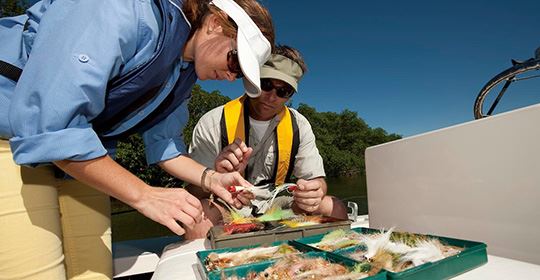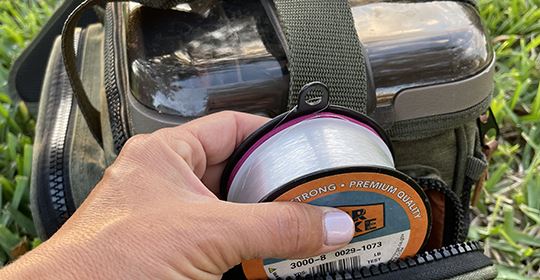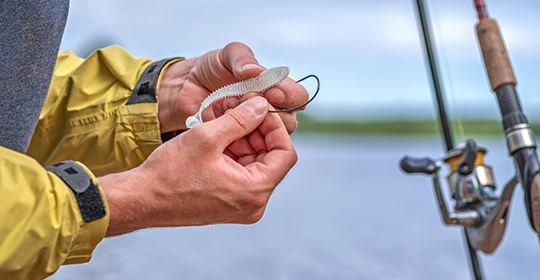Have you decided to give fishing a try this spring? Catching panfish from a nearby pond or lake is a great way to start and the list of freshwater fishing gear you need is minimal. Check out this simple list of basic gear and enjoy more time outdoors with your family this season.
 1. Tackle Box or Tackle Bag
1. Tackle Box or Tackle Bag
Get a tackle box or tackle bag for organizing and transporting your freshwater fishing gear. You can buy a tackle box made from heavy duty plastic or buy a lightweight tackle bag that holds plastic utility boxes inside. Tackle bags can be beneficial if you do a lot of bank fishing since you can organize and swap out the utility boxes to avoid carrying extra gear you don’t need. Tackle boxes tend to be bulkier and heavier, but they are a more traditional choice. In either case (tackle box or tackle bag), consider a waterproof design that will keep your lures and gear dry.
2. Fishing Rod and Reel Combo
When it comes to beginner freshwater fishing gear (particularly when fishing with kids), a spincast rod and reel combo is the best choice due to its simplicity. A spincast rod and reel combo (in this case, combo means that the rod and reel are sold together) is often used while fishing for bluegill, crappie and other panfish. You’ll notice that a spincast reel mounts on top of the rod's handle (whereas a spinning reel is mounted below the rod). There is a thumb button on a spincast reel that you push to release line when making a cast. Most spincast rod and reel combos come pre-spooled with monofilament fishing line.
 3. Monofilament Fishing Line
3. Monofilament Fishing Line
Whether you’re a new angler or you’ve been fishing for years, you should change out your monofilament fishing line every 6 months to a year. Monofilament fishing line in 4-to-6-pound breaking strength is most often used. If the line starts to coil up (sometimes referred to as having “memory”), it is time to change it. Before spring fishing season arrives, include an extra spool or two of monofilament line as part of your basic fishing gear for freshwater checklist.
4. Fishing Bobbers or Floats
Bobbers are small, lightweight buoys that attach to your fishing line and float on the surface of the water. When you get a bite, the bobber dips underwater. You can set the depth of your bait by attaching the bobber to a higher or lower point on your fishing line (higher will allow your bait to do deeper, setting the bobber closer to your bait will keep your bait shallower). There are many different types of bobbers or floats on the market these days, but basic red and white plastic bobbers are almost always among the items on a basic freshwater fishing gear checklist.
5. Stainless Steel Pliers
Pliers should be included in any list of essential fishing gear for freshwater. You’ll need to remove hooks from fish and cut fishing line (get a pair of pliers that has a built-in line cutter). If you are fishing for panfish, needle nose pliers are a good option since they are made for reaching into tight spaces (like the tiny mouth of a bluegill to remove a hook). Look for a pair of stainless-steel pliers that are sized to fit your hand comfortably and are rust resistant. The best freshwater fishing gear will hold up to the outdoor elements.
 6. New Hooks
6. New Hooks
Hooks are another item to add to your list of basic freshwater fishing gear for spring. Check to make sure you are stocked up on hooks for every spring fishing season. Baitholder hooks in sizes 4 or 6 are generally best when freshwater fishing for panfish and small bass.
7. Weights or Sinkers
Small weights, most often referred to as split-shots, will help keep your bait lower in the water column if the fish are in deeper water. You can use a pair of pliers to crimp the split-shot onto your fishing line. Split-shots are easy to find at online tackle retailers, at a local tackle shop, or at sporting goods stores.
Keep your spring freshwater fishing gear list basic to start. Once you get more experience fishing throughout the year, you can add to your gear and tackle based on the species you want to catch and places you go fishing.
Learn more at www.takemefishing.org

